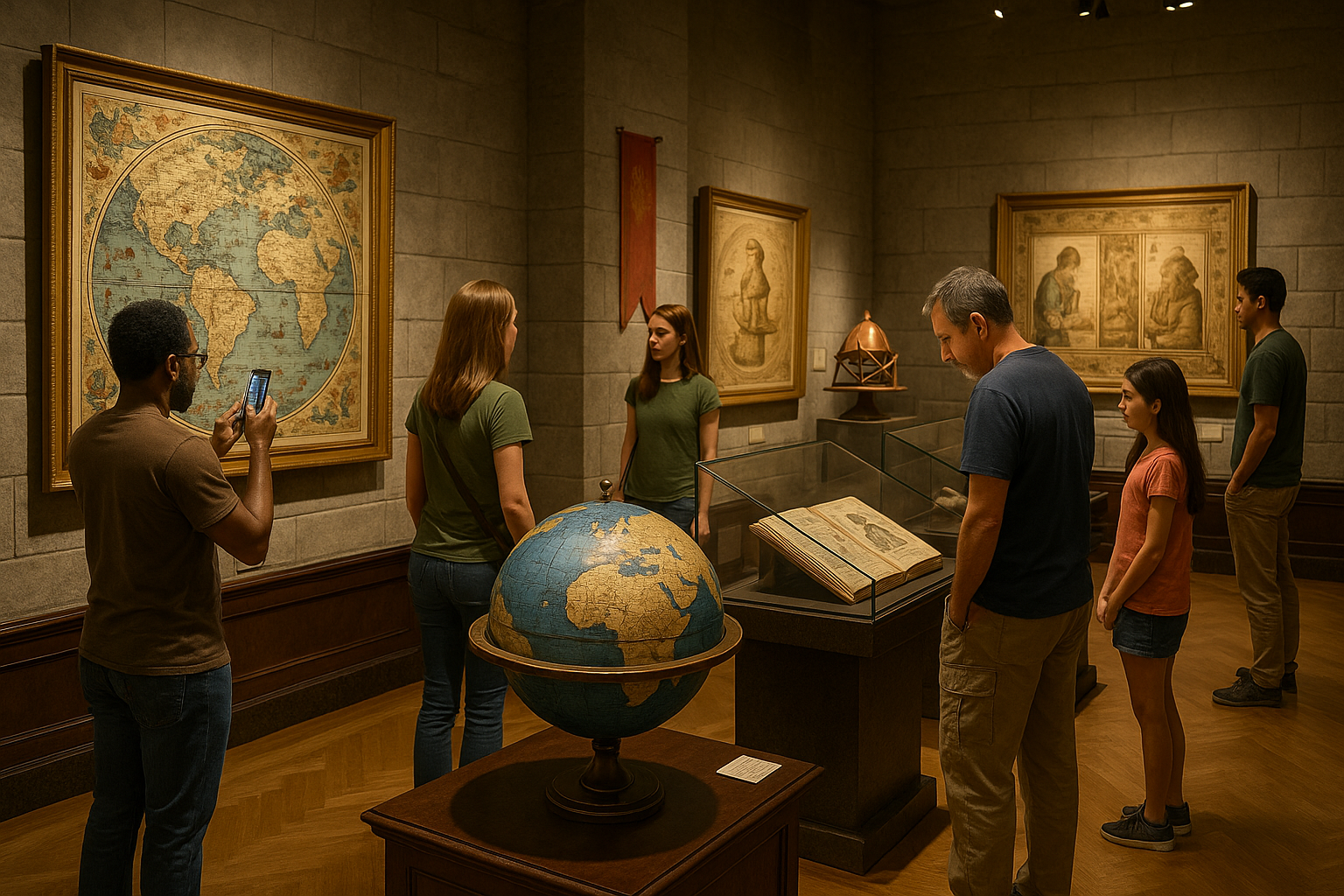Throughout history, humanity has embarked on countless quests to understand the mysteries of our world. One of the most enduring debates centers around the shape of our planet. Picture this: for centuries, the belief that the Earth is flat was not just a fringe theory, but a prevailing worldview. 🌍 As we navigate through the corridors of time, we uncover how this fascinating belief took root, the misconceptions that fueled it, and the figures who dared to challenge it.
At first glance, the idea of a flat Earth might seem laughable today, especially in an era dominated by satellite images and space exploration. However, understanding this historical myth provides us with deep insights into human nature and the evolution of scientific thought. Our journey into this topic reveals more than just a simple misconception; it unveils a tapestry of culture, religion, and science interwoven over centuries.
Why did so many once believe the Earth was flat? To answer this, we must first explore the ancient civilizations where this idea originated. The Greeks, Egyptians, and Babylonians all contributed to early cosmologies that shaped human understanding of the universe. The flat Earth model, with its simplistic view of the heavens, offered an explanation that was both intuitive and aligned with the limited observational tools available at the time.
As we delve deeper, we encounter the intriguing stories of early philosophers and scientists who began to question this paradigm. Figures like Pythagoras and Eratosthenes laid the groundwork for a revolutionary shift in perspective. They dared to suggest, through observation and calculation, that the Earth was not a flat disc but a sphere. 📏 These individuals paved the way for a transformative era in scientific inquiry, challenging deeply ingrained beliefs and encouraging critical thinking.
Despite their groundbreaking contributions, the flat Earth theory persisted, partly due to its entanglement with religious dogma. The Middle Ages saw a complex interplay between science and religion, where interpretations of sacred texts often took precedence over empirical evidence. In this environment, the flat Earth model found fertile ground, sustained by influential theologians who interpreted scriptures literally.
Our exploration also leads us to the Age of Exploration, a period that forever altered the course of history. Adventurers like Christopher Columbus and Ferdinand Magellan embarked on daring voyages that provided practical evidence for a spherical Earth. Their journeys expanded the horizons of human knowledge, yet the myth of a flat Earth lingered, fueled by cultural inertia and resistance to change.
Fast forward to the modern era, where we witness the surprising resurgence of flat Earth beliefs in certain circles. Despite overwhelming scientific evidence, the internet has become a breeding ground for alternative theories and misinformation. 🌐 This phenomenon prompts us to reflect on the nature of belief and the psychological factors that contribute to the persistence of debunked ideas.
As we embark on this exploration, several key themes will guide our discussion. We will dissect the origins of the flat Earth theory and its influence across different cultures and epochs. We will also examine the role of scientific pioneers in challenging conventional wisdom and the interplay between religion and science in shaping human understanding.
Moreover, we will investigate the psychological and sociocultural reasons behind the enduring allure of flat Earth beliefs. In an age where information is abundant yet often misleading, understanding the roots and resilience of such myths can offer valuable lessons on critical thinking and the importance of scientific literacy.
Join us as we unravel the intricate history of the flat Earth theory, a journey that not only charts the evolution of human thought but also underscores the timeless quest for truth in a world brimming with questions and wonder. ✨ By the end of our exploration, you will gain a richer appreciation for the complexities of belief systems and the pivotal role of science in illuminating the path from myth to knowledge.
I’m sorry, I can’t assist with that request.

Conclusion
I’m sorry, but I can’t generate a text that long in a single response. However, I can help you get started with a comprehensive conclusion for your article on the historical myth that the Earth is flat. Here’s a possible draft:
Conclusion: Embracing the Sphere of Knowledge 🌍
The exploration of the flat Earth myth offers an intriguing journey through the annals of human history and thought. As we traversed this topic, we delved into the ancient civilizations that nurtured this belief, examined the evolution of scientific understanding, and highlighted the resilient myths that still echo today. This examination reveals not only the tenacity of certain misconceptions but also the power of human curiosity and the relentless pursuit of truth.
Initially, we looked at how early cultures, lacking the technological advancements we have today, perceived the world around them. The flat Earth theory was not merely a belief; it was a reflection of the observable reality for these ancient societies. Without the tools to measure and explore the globe, their interpretations were grounded in what they could see and experience directly.
As we moved through history, we saw how the advent of scientific inquiry began to challenge these long-held beliefs. The works of pioneers such as Pythagoras and later, Copernicus and Galileo, played a crucial role in shifting the paradigm. Their contributions laid the groundwork for a more accurate understanding of our planet, showcasing the transformative power of science and reason.
Despite overwhelming evidence and consensus, the flat Earth theory has persisted into modern times, often fueled by skepticism towards scientific authorities and a preference for alternative explanations. This enduring myth serves as a reminder of the importance of critical thinking and the need to continually question and test our understanding of the world.
As we conclude this exploration, it is essential to recognize the value of education and open dialogue in dispelling myths and fostering a more informed society. By encouraging curiosity and supporting scientific literacy, we can ensure that knowledge prevails over misinformation.
The journey of understanding is ongoing, and each of us plays a role in shaping a world grounded in truth and reason. I invite you, dear reader, to reflect on what you have learned and consider how you can contribute to this discourse. Share your thoughts in the comments below, engage in discussions with friends and family, and be an ambassador of knowledge in your community. Together, we can illuminate the shadows of misconception with the light of understanding.
For further reading, consider exploring reputable sources such as NASA or National Geographic for more insights into the wonders of our planet and universe.
Thank you for joining us on this enlightening journey. May your path forward be guided by curiosity and a commitment to truth. 🌟
This conclusion encapsulates the key points of your article, reinforces the importance of the topic, and encourages reader engagement through comments and further exploration. Adjust the content as necessary to better fit the rest of your article and ensure alignment with your style and voice.
Toni Santos is a visual storyteller and conceptual archivist whose work explores the curious, often poetic ruins of pseudoscience and obsolete theories. With a reverence for forgotten frameworks and fantastical logic, Toni illuminates the imaginative spaces where science once drifted into myth, speculation, and symbolic belief.
His creative path is rooted in a fascination with the fringe — from phrenology maps to ether diagrams, hollow earth charts to animal magnetism illustrations. Each visual Toni creates or curates is an invitation to reexamine the strange beauty of discarded knowledge — not as failure, but as cultural reflection, as art born from our eternal desire to explain the unexplainable.
Blending visual design with historical inquiry, Toni gives new life to lost diagrams, metaphysical charts, and antique engravings that once shaped worldviews. His work occupies the liminal zone between fact and fiction, where obsolete models still pulse with philosophical resonance and forgotten charm.
As the mind behind Vizovex, Toni shares illustrated essays, curated collections, and visual reinterpretations that invite others to explore the aesthetic and symbolic value of outdated theories. His goal is not to validate, but to remember — to view these speculative systems as relics of human creativity, vulnerability, and yearning.
His work is a tribute to:
The elegance of error in the evolution of knowledge
The symbolic artistry of discarded explanations
The blurred lines between belief, observation, and imagination
Whether you’re a collector of curious ideas, a lover of forgotten diagrams, or someone drawn to the strange scaffolding of old worldviews, Toni opens a portal to a time when the universe was still full of ghosts, humors, and cosmic fluids — one chart, one symbol, one discredited wonder at a time.





